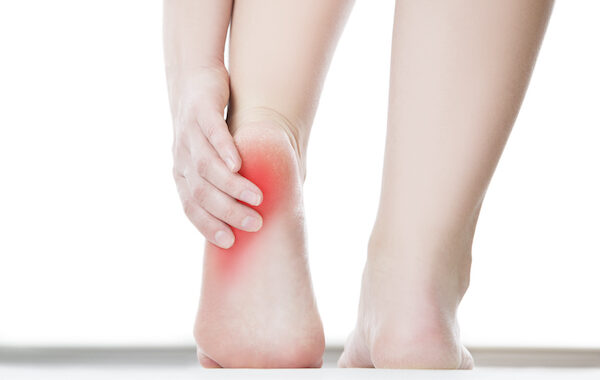Heel spurs are painful and can cause walking trouble. If you’re experiencing the problem, you’ll want to take steps to improve your condition.
Consider a few straightforward but helpful things you can do to lessen the pain of heel spurs:
- Avoid Wearing Non-Supportive Shoes – Although this advice is well-known, it’s crucial. If your shoes don’t offer support, you’re causing foot problems that significantly reduce your ability to walk and run.
- Don’t Go Barefoot – Going barefoot may seem like a carefree way to enjoy the warm weather, but many risks are associated with going without shoes. For example, you’re more likely to step on a sharp object or something that could puncture your foot. You’re also at risk of burning the bottoms of your feet on hot pavement or sand. Furthermore, going barefoot can agitate heel spurs or other foot conditions. In short, while it may feel good to kick off your shoes and let your feet breathe, keeping them covered is safer.
What starts small, like foot problems, may accelerate, so addressing the issue right away is a good idea. But, of course, that means caring for your feet.
- Don’t Forget Exercise – You have little to lose by incorporating stretching exercises into your routine. Boosting flexibility in your foot’s impacted area will reduce pain substantially.
You’ll see gains happen when you gently stretch your muscles, increasing blood flow. But, again, following the proper form and staying consistent will help you get the most benefit.
Stretching helps you in numerous ways and is worth doing for your feet to address a particular problem or the rest of your body for relaxation and health improvements. From keeping your ankles limber to your foot flexible, exercise helps in multiple ways.
- Invest In Shoe Orthotics – Wear a shoe insert or orthotic to take pressure off your heel. Always consider using them when you have heel spurs or want to prevent the trouble upfront. These reduce stress and tear on your feet. Orthotics slip into your existing shoes and provide padding and arch support, which is most helpful for people on their feet.
It’s worth the small investment of time and effort to reap the rewards, mainly to prevent or treat heel spurs. Like most new exercise ventures, stick with this for at least three weeks. That way, you’ll form an excellent foot health-boosting habit that will last for life.
Consult With Your Doctor
If these approaches to treating heel spurs don’t work, your doctor may recommend other treatments such as steroid injections, special exercises, night splints, and custom-made shoes or inserts. Sometimes, surgery could be the best solution to remove the spur.
If you’re looking for alternative or complementary surgery treatment, we hope this article has given you some ideas. We hope you’ll experiment with a few of these methods and see which works best. You don’t have to let heel spur pain keep you from doing the things you love. You can start feeling better and living your best life today.

